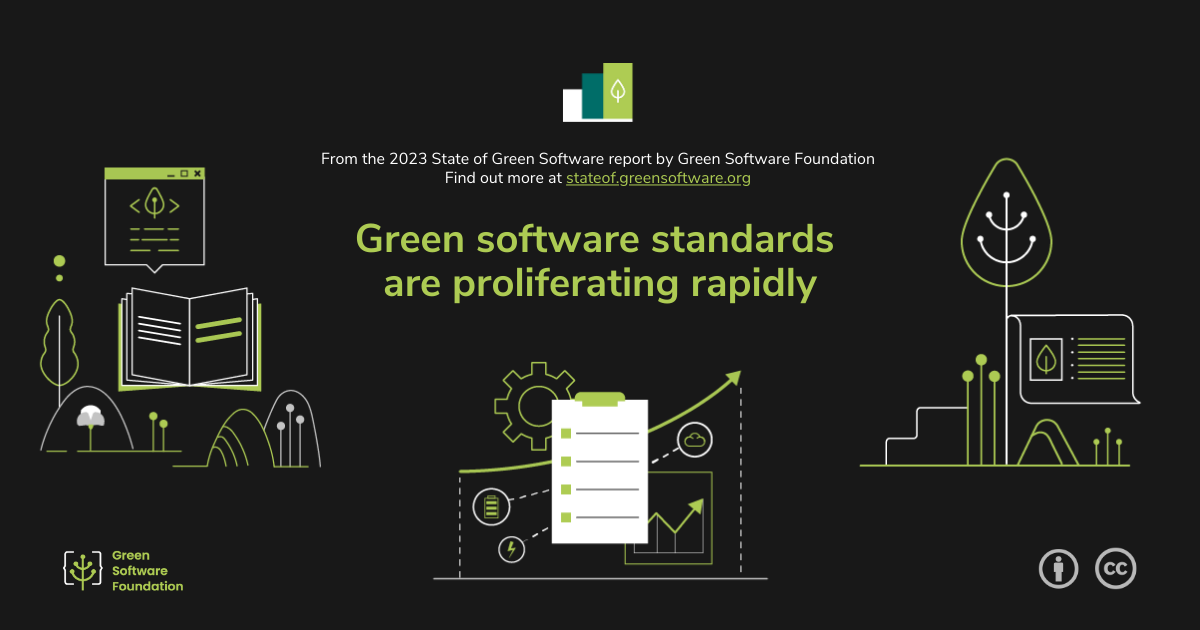Green software standards are proliferating rapidly
On a global level, we are observing two major trends:
- Repurposing existing ICT standards to address green software agendas
- The introduction of more specialized and granular guidance on the environmental impacts of software to supplement existing standards
An example of the approach to “greening” existing standards is ISO 25010, the software quality standard. Organizations are increasingly recognizing the environmental standards of green software dimensions such as “performance efficiency,” “resource utilization,” “maintainability,” “portability,” “usability,” and the “degree to which a product or system mitigates the potential risk to… the environment in the intended contexts of use,” which are already implicit in ISO 25010.
When it comes to metrics, the most prominent standard remains ISO 14044 on Life Cycle Assessment, combined with the lesser known ITU L.1410 standard, which explains how to calculate Life Cycle Assessments (LCAs) specifically for information and communication technology goods, networks, and services.
ISO 14001 is the Environmental Management System standard that provides organizations with a framework to implement, maintain, and improve their environmental management practices. Practitioners can harness this standard to include the environmental impacts of software. Similarly, ISO 14062, which deals with environmentally-informed product design and development, has been highlighted in green software platforms.
Organizations are proposing ISO 14064, the Greenhouse Gas (GHG) Management and Verification Standard, and ISO 26000, the Social Responsibility Standard, as frameworks for addressing green software requirements. ISO 14064 mandates organizations to measure, report, and verify their GHG emissions, while ISO 26000 provides guidance on implementing socially responsible practices, including in the areas of sustainable development and environmental protection.
Existing standards are also needed when calculating scopes 2 and 3 software emissions. The Green Software Foundation expects that the approaching wave of national policy and legislation will be guided by roughly 150 sustainability-related ITU standards and recommendations. These standards focus on impacts, metrics, and best practices around software-related infrastructure such as data centers, servers, networks, and client devices.
Amongst these, L.1420 is recognized for its impact assessment methodology for energy consumption and GHG emissions in Information Communication Technologies (ICT). Translated into future national ICT strategies, these organization-level standards may have regulatory impacts on companies across the world.
Beyond the “greening” of existing standards, there is a trend toward more granular guidance to supplement existing standards, such as:
- The Green Software Foundation’s Software Carbon Intensity specification, which is impacting industry and academia and may evolve into an ISO certification
- The ITU’s “Methodology for energy consumption and greenhouse gas emissions impact assessment of information and communication technologies in organizations”
- The EU’s commitment to “developing consistent indicators and standards to effectively focus actions on reducing the negative impacts of digitalization on the environment”
- The OECD’s vision for “a comprehensive framework developed by international or inter-governmental standard-setting institutions” around green AI
- W3C’s ongoing work to draft guidance on sustainable web design, from design patterns to metrics
- Certification schemes like Germany’s Blue Angel government accreditation, or community-driven schemes like France’s Numerique Responsable (Responsible Software) label
The efforts above are formative and fragmented but have achieved serious institutional momentum through the backing of the United Nations, OECD, the EU, national governments, and industry bodies. In particular, current or emergent green software standards focus on metrics, including processes, software patterns, and certifications. One cross-cutting factor in emerging green software standards is the adoption of an LCA approach to digital emissions, and the incorporation of scopes 1-3 accounting.
